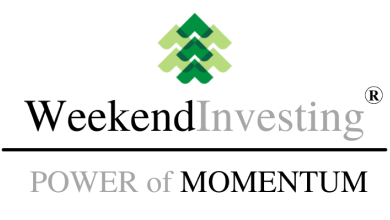
In life, we’re always searching for balance — whether it’s in our personal lives or in our investing journeys. Balance is what makes our path smooth, enjoyable, and ultimately successful.
When navigating financial markets, we face constant uncertainty. Challenges arise, and we weigh difficult trade-offs. Sometimes, we’re willing to accept volatility for higher returns. Other times, we crave more stable outcomes, even if it means sacrificing a bit of growth.
Ultimately, we all yearn for that perfect balance: a way to make our investing journey profitable, yet peaceful. But for many investors, even after decades in the markets, that balance remains elusive.
Over my 30 years observing markets and working with investors, two big questions consistently come up:
Where should I invest within equities?
How can I stay calm when markets turn volatile or go crazy?
The Big Question #1 : Where Should I Invest Within Equities?
When deciding where to invest within equities — particularly in India — we have three broad choices:
- Large Caps
- Mid Caps
- Small Caps
Each comes with its own narratives and expectations.
The Comfort of Large Caps… But at a Cost ?
Many investors gravitate towards large caps for safety. They’re seen as more stable and less prone to extreme swings. But history tells a nuanced story. Though large caps have done relatively better than the lower caps, the overall fall is still hard to digest.



While large caps indeed fall less than smaller segments, their absolute drawdowns are still significant. A drop of 30–60% is hardly comforting! But the crux of it is that investors try to drift towards large caps especially when they sense panic in the markets.
The Temptation of Smaller Caps in Bull Markets
The flip side? When markets roar back, large caps often lag behind.



This data fuels FOMO (fear of missing out). Investors in large caps often watch friends bragging about 2x, 4x, or 6x returns from mid and small caps. It’s tempting to chase those gains.
Yet pure small-cap investing carries risks. There can be long periods — even over a decade — when small caps generate little to no returns. Their rallies tend to be sharp but infrequent.
So, we’re left juggling the temptation for higher returns in small caps with the desire for safety in large caps. It’s the classic investor dilemma.
The Big Question #2 : How Do I Stay Calm in Volatile Markets?
Beyond allocation choices, investors constantly worry about market volatility. Crises can erupt overnight:
- Geopolitical conflicts
- Global pandemics
- Banking crises
- Sudden rate hikes
- Rising debt levels
- Inflation shocks
Markets can turn on a dime. Panic spreads faster than ever in the age of social media. News travels at light speed, and portfolios can swing wildly within days.
This makes one thing crystal clear: a hedge is no longer optional.
Gold: The Timeless Hedge
Throughout history, gold has been a powerful stabilizer during crises. The data speaks volumes.
GFC (Jan 2008–Mar 2009):
Equity indices down -58% to -76%
Gold up +37%

Nov 2010–Dec 2011:
Equity indices down -27% to -40%
Gold up +42%

Jan 2008–Nov 2012 (post-GFC extended):
Equities down between 15% – 45%
Gold surged +193%

Pre Covid Phase (Jan 2018 – Jul 2020):
While equities struggled, gold rose +80%

Such consistent performance underlines why gold deserves a permanent spot in portfolios. It’s not merely an optional asset; it’s an insurance policy.
So Many Questions Remain…
Investors wrestle with constant questions:
Will I always be one step behind the market?
Why does every choice feel like a trade-off?
Why do markets seem to fall when I buy and rise when I sell?
Can I grow my wealth without losing sleep?
Must I keep shifting money between segments to chase the next winner?
How can I avoid big drawdowns yet capture opportunities?
How do I invest with confidence despite headline shocks?
These aren’t trivial concerns. They’re central to achieving peace of mind in investing.
The Simple Answer: Balance Across All Segments + Gold

The solution lies in a balanced approach. Ignoring any segment — large caps, mid caps, or small caps — means missing out on parts of the market’s rhythm. But we also need a hedge to shield us from the inevitable storms.
The simplest path to balance?
25% in Large Caps
25% in Mid Caps
25% in Small Caps
25% in Gold
Testing the Balance: The Last Nine Years
Let’s see how this combination has worked in practice.

Over the past nine years:
- Gold rose from 100 → 339
- Large caps rose from 100 → 320
- Small caps rose from 100 → 351
- Mid caps rose from 100 → 492
Mid caps outperformed overall, but here’s the catch: they did so with significantly higher volatility and larger drawdowns.
Combining Them Smooths the Ride
When combined equally and rebalanced monthly, these four components delivered:
A CAGR of ~16.3% over nine years
A maximum drawdown of just -24%


Compare that to:
Small caps: up to -60% drawdown
Mid caps: -40% drawdown
Large caps: -30% drawdown
Gold alone: -12-14% drawdown

This combination achieved solid returns while avoiding the brutal depth of corrections seen in single-segment portfolios.
Taking It Further: The Power of Momentum
Now imagine not just investing in the indices themselves but going deeper:
CNX 100 (Large Caps) has ~100 stocks
Midcap 150 has ~150 stocks
Smallcap 250 has ~250 stocks
Each index holds strong, neutral, and weak stocks. Instead of buying the entire index, why not isolate the strongest performers?

By focusing only on the strongest stocks and avoiding the weak or neutral ones, we can extract greater alpha. This is where momentum investing shines.
Presenting Mi Allcap GOLD

This thinking led us to develop Mi AllCap GOLD — an equity-powered, gold-backed, future-ready strategy.
Here’s how it works:
Invests in 10 stocks from CNX 100 (large caps)
Invests in 10 stocks from Midcap 150
Invests in 10 stocks from Smallcap 250
Maintains a 25% allocation to Gold ETFs
Each stock holds 2.5% exposure to limit individual risk
Rebalanced monthly to maintain discipline and capture new trends
If any stock grows 3x its allocation within the month, it’s trimmed back to its original weight
Recommended capital: ₹5 to ₹50 lakhs, ideally ₹10–20 lakhs
Suggested outlook: 5 years
How Does Mi AllCap GOLD Answer Your Questions?
Where should I invest within equities?
→ The answer is clear: across large, mid, and small caps, selecting only the strongest stocks in each segment.
How to stay calm when markets are volatile?
→ Stay diversified, focus on strength, exit weakness quickly, and hold gold as a permanent hedge for turbulent times.
Mi AllCap GOLD offers a crystal-clear plan. It eliminates guesswork and the stress of constantly shifting strategies. Instead, it’s built to thrive across market regimes, capturing growth while shielding your capital during storms.
Final Thoughts
In investing, as in life, balance is not just an ideal — it’s a necessity.
Markets will always cycle through fear and euphoria. Crises will appear unannounced. Yet with a balanced, disciplined approach, you can navigate these waters confidently.
Mi AllCap GOLD is our answer to the questions every investor grapples with. It’s about clarity, strength, protection, and peace of mind.
If you’ve been seeking that elusive balance in your portfolio — this could be the solution you’ve been waiting for.






